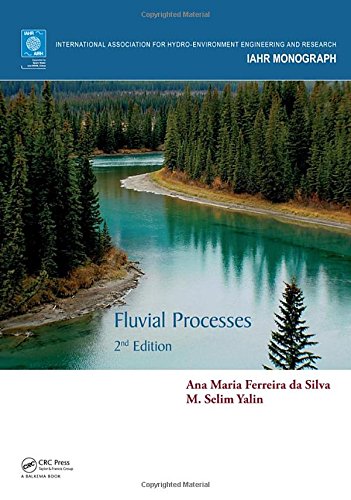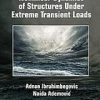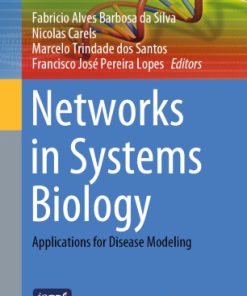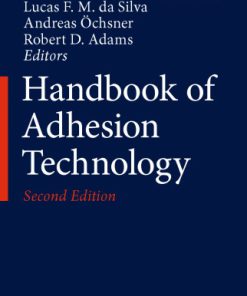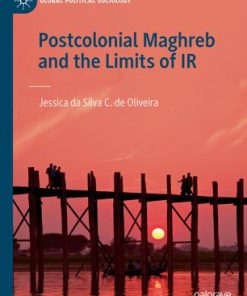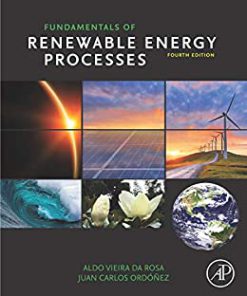Fluvial Processes 2nd Edition by Ana Maria Ferreira da Silva, Selim Yalin ISBN 1351796259 9781351796255
$50.00 Original price was: $50.00.$25.00Current price is: $25.00.
Fluvial Processes 2nd Edition by Ana Maria Ferreira da Silva, M. Selim Yalin – Ebook PDF Instant Download/Delivery: 1351796259, 978-1351796255
Full download Fluvial Processes 2nd Edition after payment
Product details:
ISBN 10: 1351796259
ISBN 13: 978-1351796255
Author: Ana Maria Ferreira da Silva, M. Selim Yalin
Fluvial Processes 2nd Edition:
A stream flowing in alluvium deforms its bed surface, forming ripples, dunes, bars, etc., and, in many instances, it deforms its channel entirely, thereby creating meandering or braiding patterns. It could be said that, in general, an alluvial stream and its deformable boundary undergo a variety of fluvial processes leading to the emergence of a multitude of alluvial forms.
This book concerns the physics and analytical treatment of various fluvial processes and the associated alluvial bed and plan forms listed above. Following an introductory chapter on the basics of turbulent flow and sediment transport, the book covers the origin, geometric characteristics and effects of bed forms, from small- to meso-scale (ripples, dunes, alternate and multiple bars); the initiation, geometry and mechanics of meandering streams; the computation of flow, bed deformation and the planimetric evolution of meandering streams; and braiding and delta formation. The book also covers the regime concept, the time-development of a stream towards its regime state, and the formulation of stable, or equilibrium, morphology. The book distinguishes itself by its comprehensive analysis and discussion of key processes involved in large-scale river morphodynamics.
The book was written primarily for researchers and graduate students of hydraulic engineering, water resources and related branches of earth sciences, but it will also prove useful for river engineers and managers.
Fluvial Processes 2nd Edition Table of contents:
1 Fundamentals
- 1.1 Sediment transport
- 1.2 Turbulent flow
- 1.2.1 General
- 1.2.2 Vertical distributions of shear stress and flow velocity
- 1.2.3 Average flow velocity
- 1.2.4 Resistance equation
- 1.3 Two-dimensional two-phase motion
- 1.4 Bed-load rate; Bagnold’s formula
- 1.5 Vector forms of the bed-load rate
- 1.6 Suspended-load rate
- 1.7 Sediment transport continuity equation
- 1.8 Additional remarks
- Problems
- References
2 Bed forms
- 2.1 General
- 2.2 Origin of bed forms
- 2.2.1 Dunes and bars
- 2.2.2 Ripples
- 2.2.3 Clarification of “uniform flows”
- 2.2.4 Special aspects
- 2.2.5 Additional remarks: the ongoing debate on the origin of bed forms
- 2.3 Geometry and existence regions of dunes and ripples
- 2.3.1 Introductory considerations
- 2.3.2 Geometric characteristics of dunes
- 2.3.3 Geometric characteristics of ripples
- 2.3.4 Existence regions of dunes and ripples
- 2.4 Geometry and existence regions of bars
- 2.4.1 Existence regions of alternate and multiple bars
- 2.4.2 Geometric characteristics of alternate bars
- 2.5 Final remarks
- References
3 Flow past undulated beds
- 3.1 Flow resistance factor
- 3.1.1 General
- 3.1.2 Resistance factor formula
- 3.1.3 Other methods for determination of c
- 3.1.4 Flow rate as one of the parameters determining c
- 3.1.5 Interrelation between Fr and c
- 3.2 Sediment transport rate of flow past undulated bed
- 3.3 Mechanical structure of flow over dunes
- Problems
- References
4 Regime channels and their computation
- 4.1 Introduction
- 4.1.1 Empirical regime formulae
- 4.1.2 Rational methods based on extremal hypotheses
- 4.2 Regime-channel defining parameters
- 4.2.1 Regime channel R1
- 4.2.2 Regime channel R
- 4.2.3 Relation between R1 and R
- 4.3 Regime flow-width and depth
- 4.3.1 Basic dimensionless formulations
- 4.3.2 The expressions of BR and hR
- 4.4 Determination of the regime minimization criterion
- 4.4.1 Basic relations and assumptions
- 4.4.2 Variation of flow energy structure in the flow direction lc at an instant
- 4.4.3 Variation of flow energy structure with the passage of time Θ
- 4.4.4 Froude number; comparison with experiment
- 4.5 Computation of regime channels R
- 4.5.1 Computation procedure
- 4.5.2 Special case: gravel-like regime channel formation
- 4.5.3 Special case: constant flow width
- 4.6 Other rational methods of computation of regime channels
- 4.7 Representative flow rate
- Problems
- References
5 Formation of regime channels; meandering and braiding
- 5.1 Meandering and regime development
- 5.1.1 Initiation and subsequent development of meandering
- 5.1.2 Tracing of meander development on the (Fr; η∗)- and (B/h; h/D)-planes
- 5.2 Braiding and regime development
- 5.2.1 Overall description of braiding
- 5.2.2 The role of the slope
- 5.2.3 Tracing of braiding development on the (Fr; η∗)- and (B/h; h/D)-planes
- 5.2.4 Additional remarks on braiding
- 5.2.5 Delta formation
- 5.3 Time development of a single-channel stream
- 5.3.1 Adjustments of channel geometry
- 5.3.2 Development duration
- 5.4 Large-scale bed forms and regime development
- Problems
- References
6 Geometry and mechanics of meandering streams
- 6.1 Channel-fitted coordinates
- 6.2 Sine-generated channels
- 6.2.1 Definition; geometric properties
- 6.2.2 Dimensionless expression of flow related characteristics
- 6.3 Mechanics of meandering flows
- 6.3.1 Introductory considerations: averaging procedures
- 6.3.2 Structure of meandering flow
- 6.3.3 Cross-circulation
- 6.3.4 The “convective base”
- 6.4 Bed deformation
- 6.4.1 Nature of deformed bed
- 6.4.2 Mechanics of bed deformation
- 6.5 Resistance factor of meandering streams
- 6.6 Additional remarks
- Problems
- References
7 Meandering-related computations
- 7.1 Vertically-averaged flow in meandering channels
- 7.1.1 Equations of motion and continuity; evaluation of the resistance factor cM
- 7.1.2 Expression of the resistance factor cM for a flat bed
- 7.1.3 Variational approach to the determination of a meandering flow
- 7.2 Bed deformation by a meandering flow
- 7.2.1 Computation of the developed bed topography
- 7.2.2 Computation of bed deformation over time
- 7.3 Migration and expansion of meander loops
- 7.3.1 General
- 7.3.2 Normal and radial bank displacement velocities
- 7.3.3 Evaluation of radial bank displacement velocity
- 7.3.4 Migration and expansion components of the radial bank displacement velocity
- 7.3.5 Loop-expansion velocity and regime development
- 7.3.6 Computational procedure and example of application
People also search for Fluvial Processes 2nd Edition:
hydrology and fluvial processes pdf
which of the following are fluvial processes
define fluvial processes
three fluvial processes
fluvial processes in geomorphology pdf
fluvial processes and landforms
Tags:
Ana Maria Ferreira da Silva,Selim Yalin,Fluvial,Processes
You may also like…
Medicine
Networks in Systems Biology Applications for Disease Modeling Fabricio Alves Barbosa Da Silva
Computers - Computer Science
Business & Economics - Personal Finance
Individual Behaviors and Technologies for Financial Innovations Wesley Mendes-Da-Silva
Science (General)
Politics & Philosophy - International Relations
Postcolonial Maghreb and the Limits of IR Jessica Da Silva C. De Oliveira
Business & Economics - Industries
Fundamentals of Renewable Energy Processes 4th Edition Aldo 0128160373 9780128160374
Uncategorized


